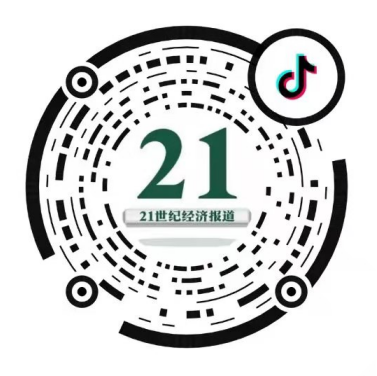“My family, I've been wandering away from home for a long time. I'm lost."
Recently, a Chinese social media mini-series "Escape from the British Museum" is casting the British Museum into the limelight and increasing international calls for the repatriation of artifacts.
The viral three-part series has captured the imagination of millions by humanizing a jade teapot, a relatively recent addition to the museum’s collection, on a quest to return to China.
Now the number of views of this short drama has reached hundreds of millions, becoming a phenomenal hit as many watched it with tears.
The series arrives at a critical time for the iconic institution, as it reels from last month’s revelation that 2,000 of its items are “missing, stolen or damaged”. This news has further fueled international demands, including from China, for historical treasures to be repatriated.
Little Teapot’s Journey Back Home
Directed by two Chinese vloggers, the three-episode series tells the story of how a Chinese cultural relic escapes from the British Museum and finds its way back to China.
The videos were inspired by a netizen who suggested making a video chronicling the ordeal of Chinese cultural relics returning home from the UK to celebrate the Chinese lunar New Year.
The duo went to the UK in June and spent three months shooting the video. They said the story is based on historic facts and aims to draw attention to the Chinese cultural relics held abroad.
In the video series, a female vlogger plays the role of an ancient Chinese jade teapot, while her male partner is a journalist who helps the artifact return to China. The teapot’s mission to return home begins when she takes human form and encounters a Chinese journalist in London.
In the last episode released online on Sept 5, the jade teapot returns to China with letters from other Chinese cultural artifacts, which were stolen or looted from China and are displayed or stored in the British Museum.
"Uncle of the pianist terracotta figurine, the aunt of the flute master terracotta figurine asked me to bring you this message: let's finish playing the Changgexing together when we meet."
The drama reaches a climax when the little jade teapot reads the messages, and the silent artifacts start to have voices, saying they are homesick, wishing their missing family all well and the motherland being peaceful and prosperous forever, bringing strong emotions in the audience.
Crafted in 2011 by a Chinese artist with a flair for intricate jade carvings, the teapot may not qualify as an ancient relic but embodies a craft unique to China and that has resonated with the Chinese public.
Initially launched on Douyin, China’s version of TikTok, the series has been viewed a staggering 270 million times. Its creators, who assert their independence as content creators, gained more than five million followers on Chinese social media platforms within a week of the series’ debut.
Chinese state broadcaster CCTV endorsed the series, commending the enthusiasm of young Chinese for their own history and culture, and social media chatter suggests it resonates with a collective yearning for “homecoming”. The project has also inspired a spate of imitations, with influencers adopting personas from ancient Chinese art.
International Pressure on the British Museum
The reason why this 18-minute mini-series went viral among young Chinese, is that it represents the shared feeling of the Chinese people as well as those in other countries from where Britain and other colonial powers stole and looted historical, religious and cultural artifacts.
In fact, Sudan, Nigeria, Greece, and Egypt, have previously petitioned for the return of artifacts, challenging the British Museum’s long-standing assertion that it can best protect these global treasures.
Recent events, however, have seriously undermined this claim.
The world-renowned museum has been under pressure after 2,000 items were reported to be "missing, stolen or damaged" last month. With only about 1% of its eight-million-strong collection on display, critics argue that the latest controversies show that the institution may not be the sanctuary it purports to be.
Since mid-August, the British Museum has been struggling to pick up the pieces amid the festering scandal. The theft is suspected to be an inside job that took place over a period of 20 years. Alerted to the sale of alleged stolen items in 2021, the museum did not take action until earlier this year.
The museum in mid-August dismissed a staff member after items from its collection, including gold jewelry and gems of semiprecious stones dating from as far back as the 15th century B.C., were found missing.
Its director Hartwig Fischer resigned the following week, admitting that the museum "did not respond as comprehensively as it should have in response to the warnings (of thefts) in 2021."
Early this month, former Victoria & Albert Museum chief Mark Jones was named as the British Museum's interim director.
The British Museum claimed it had called in the police, imposed emergency measures to increase security, set up an independent review into what happened and lessons to learn.
But even as the museum seeks to maintain a sense of normalcy in its operation, industry professionals have expressed both shock at the vulnerability of such a high-level institution and doubt that the lost items can be all retrieved. It's reported that not all of the items were properly catalogued and registered.
With suspicions about the British Museum's ability to keep the artifacts safe, many countries have renewed calls to demand the return of the items that belonged to them.
"We want to tell the British Museum that they cannot any more say that Greek cultural heritage is more protected in the British Museum," Despina Koutsoumba, head of the Association of Greek Archaeologists, told the BBC recently.
"It's shocking to hear that the countries and museums that have been telling us that the Benin Bronzes would not be secure in Nigeria, have thefts happening there," Abba Isa Tijani, director general of Nigeria's National Commission for Museums and Monuments, recently told British media.
Bell Ribeiro-Addy, chair of the All-Party Parliamentary Group for Afrikan Reparations, threw light on the "insulting ridiculousness" of the British Museum's refusal to return artifacts to their country of origin on security grounds.
"One of the most insulting reasons that they've given is that the other countries that these items belong to would either not be able to take care of them or they are likely to be stolen," she said. "But you've got people in this country putting them on eBay.”
Egypt has been asking for the return of the Rosetta Stone, forcibly taken by the British empire in 1801. Greece has also been campaigning for its Parthenon sculptures, also known as the Elgin Marbles, it took in the 19th century to be returned. Nigeria also demanded the Benin Bronzes to be given back, which British forces took in 1897.
Data published by the UNSCEO shows that about 1.6 million Chinese cultural relics were stolen from China and collected by 47 museums around the world, among which the British Museum has the largest collection, at about 23,000 pieces. Many were plundered from the court of the Qing Dynasty during the Siege of Beijing by the Eight-Nation Alliance in 1900.
“家人,我在外面流浪了好久,我迷路了。”
近日,网络短剧《逃出大英博物馆》火爆出圈,一时间,有关文物保护及追索话题成为网络热点。
9月5日,小短剧终于迎来最后一集,片名“下一站是,瑰葭(归家)路”再度戳中网友泪点。
“出逃”的玉壶还是回家的国宝?
短片以拟人手法,讲述一盏从大英博物馆出逃的中华缠枝纹薄胎玉壶,偶遇一名在海外工作的中国媒体人,随后共同踏上归家之路的故事。这部总共不足20分钟的短剧,却处处藏着创作者的用心,诸多细节已被网友们抽丝剥茧、细细品味。
初遇时小玉壶脸颊脏脏的,感叹男主角与室友可以住在这么大的“柜子”里。有网友晒出自己在大英博物馆参观时的照片,中华缠枝纹薄胎玉壶与其他艺术品摆在一起,没有名字介绍,只用一个编号3代替。“是盏,是中华缠枝纹薄胎玉壶!”剧中,小玉壶终于可以为自己正名。
有人质疑,一部呼吁大英博物馆归还文物的短片,为何主角却不是文物?中华缠枝纹薄胎玉壶,又称碧玉薄胎茶壶,由玉雕大师俞挺制作于2011年,2017年入藏大英博物馆。中华缠枝纹薄胎玉壶并非文物,而是一件现代艺术品。
有人猜测,这是因为小玉壶年纪最小,最有可能找回家。其他文物都是战火纷飞的年代,被掠夺者装进麻袋里带走的,记不得来时的路。
在最后一集中,小玉壶终于揭晓了自己的任务,就是带着“哥哥姐姐伯伯阿姨爷爷奶奶们”的信件回国寻亲,传递“亲人们”的思念与呼唤。
“琴师陶俑伯伯,笛师陶俑阿姨让我告诉您,改日那首未完的《长歌行》,大家再一起奏完吧。”
“唐大马,我是唐小马,一眨眼我们已经一百六十三年没有见面了。每天洋人走后,我就会围着这牢笼跑上几圈,跑着跑着,我便会想起几百年前,我们相约一起跑遍大好江山的誓言……”
“诸位同胞,我的弟弟在战火中被洋人掳走了,我们兄弟本是一对,如果他先回家了,一定!一定要告诉我一声呀!”
“来,给你们壶爹爹念首诗,杯杯盏盏念故乡,相碰低吟诉衷肠”......
最后,一众文物齐发声:“愿山河无恙,家国永安。”正好呼应了男主角的名字——张永安。
完成任务后的小玉壶决定不再停留,因为“中国人不做那种偷鸡摸狗的事,总有一天,会风风光光、堂堂正正地回家。”
一场场跨越千百年的文物对话,震撼着每一个观众的心。三集短片共18分钟,却打开了千百年文化对话的“窗口”,剧中每一帧镜头都是中华优秀传统文化和中华文明的再现,凝聚着中国人深沉的家国情怀。
《逃出大英博物馆》的走红绝不是意外,这是一部兼具创意与深度的作品。然而说起这部剧的创作来由,当初也只是网友无意间的想法:今年年初,一位网友提出了制作《逃出大英博物馆》动画作品的剧本创意,各个文物苏醒过来逃出大英博物馆,跋山涉水回家过年。
博主煎饼果仔留下一句“等我”,断更三个月、暂停一切商单,和另一位博主也是主演夏天妹妹带着两位助理,奔赴英国实地考察,翻阅资料,推敲剧本,拍摄视频。历时3个月,他们制作的短剧《逃出大英博物馆》终于上线,并迅速走红,俘获了大批观众的心。
对于为什么要拍摄《逃出大英博物馆》,两位主创也表示:是承诺,也是自媒体人的热忱,是少年的一拍即合,是不计成本的赤诚之心,更是中国人骨子里的“争口气”。
一群年轻人远赴英国,只为一场盛大且浪漫的中华文物奔赴之旅。一部抖音短剧,也戳中了无数人的泪点和痛点。
短片贡献了颇多金句,比如“家人,我在外面流浪了好久”“从哪来的回哪去”“你要带我回中国吗”……每一句话都能读出背后的深意:那是流落海外的孤苦无依,也是迷失他乡的无路可走。
大英博物馆深陷文物失窃丑闻
就在短剧预告放出前不久,大英博物馆被曝出有约2000件馆藏珍品“不翼而飞”,其中一部分甚至被挂到网上低价出售。当地时间8月25日,大英博物馆馆长与副馆长相继辞职。大英博物馆被多个国家要求归还本国文物,戳中了每一个中国人强烈期盼流失海外文物早日回家的内心。
当地时间8月16日,大英博物馆藏品被盗消息传来,相关文物最早可追溯至公元前15世纪。不足10日,大英博物馆馆长费舍尔 (Hartwig Fischer)引咎辞职。而费舍尔宣布辞职的第二天,《逃出大英博物馆》的预告片正式上线。
自监守自盗丑闻曝光后,英国大英博物馆陷入信誉危机。该馆日前宣布,将任命英国维多利亚与阿尔伯特博物馆前馆长马克·琼斯担任大英博物馆临时馆长,以接替先前引咎辞职的哈特维希·菲舍尔。大英博物馆一名发言人告诉新华社记者,警方调查仍在进行中,馆方还启动了独立审查以吸取教训。
大英博物馆8月中旬承认,馆方发现部分藏品“失踪、失窃或损坏”后,解雇了一名员工并报警。流失藏品包括产自公元前15世纪至公元19世纪的黄金珠宝和玻璃器物等。
8月下旬,菲舍尔宣布辞职。博物馆董事会主席乔治·奥斯本近日承认,该馆约2000件藏品流失。他说,并非所有被盗藏品都被规范登记和编目。
大英博物馆一名发言人4日在接受新华社记者书面采访时表示,馆方已请警方介入调查,采取了紧急措施加强安保,并启动一项独立审查以查明事件并总结教训。
这起失窃丑闻被英国媒体形容为“国家耻辱”,同时也在全球引发了连锁反应,事件不仅震动英国,也牵动所有在大英博物馆“藏”有文物的国家的心。
国际艺术品追讨组织首席执行官克里斯托弗·马里内洛在接受新华社记者采访时说,大英博物馆发生失窃事件“令人震惊”,因为它是“世界上最重要、资金最雄厚的博物馆之一”。这名专门从事追讨被盗艺术品事务的律师担心,那些没有被妥善登记和编目的藏品很可能永远无法归还博物馆,他建议有关方面尽快发布被盗藏品清单。
大英博物馆成立于1753年,是世界上参观人数最多的博物馆之一,藏品800多万件。文物流失事件发生后,多国要求大英博物馆尽快归还文物。
希腊考古学家协会主席迪斯皮娜·库特索姆巴对英国媒体表示,希腊非常关心被盗文物中有多少希腊文物。“我们想告诉大英博物馆,他们可不能再说希腊文化遗产在大英博物馆能得到更好的保护。”希腊文化部长莉娜·门佐尼说,希腊一直要求大英博物馆归还帕特农神庙大理石雕刻,大英博物馆文物流失暴露的安全问题使希方的要求更加强烈。
据报道,尼日利亚方面要求大英博物馆归还贝宁青铜器,这些青铜器的原属地现位于尼日利亚境内。尼国家博物馆和古迹委员会主任阿巴·伊萨·提贾尼在接受英国媒体采访时说:“有些国家和博物馆一直告诉我们,贝宁青铜器在尼日利亚不安全,但他们那里如今发生了盗窃事件,这令人震惊。这个问题的关键在于它们是被盗文物,就应该回到原属地。”提贾尼说,尼政府将在几周内致信大英博物馆和英国政府,要求立即归还贝宁青铜器。
据埃及媒体报道,埃及著名考古学家、前文物部长扎希·哈瓦斯对大英博物馆处理埃及文物的方式表示强烈不满,认为大英博物馆藏品失窃事件是一场“全球性灾难”,是对世界遗产的“严重犯罪”。他要求大英博物馆归还包括罗塞塔石碑在内的埃及文物。此外,哈瓦斯还建议联合国教科文组织和埃及旅游和文物部组织一次国际会议,商讨在大英博物馆保存文物的风险,以及如何尽快将它们归还原属地等问题。
联合国教科文组织此前发布的报告显示,据不完全统计,在全世界47个国家、200多家博物馆的藏品中,有164万余件中国文物,而民间收藏的中国文物是馆藏数量的10倍之多。另据中国文物学会统计,从1840年鸦片战争以来,有超过1000万件中国文物流失海外,其中国家一、二级文物达100余万件。

Executive Editor: Sonia YU
Editor: LI Yanxia
Host: Stephanie LI
Writer: Stephanie LI
Sound Editor: Stephanie LI
Graphic Designer: ZHENG Wenjing, LIAO Yuanni
Produced by 21st Century Business Herald Dept. of Overseas News.
Presented by SFC
编委: 于晓娜
策划、编辑:李艳霞
播音:李莹亮
撰稿:李莹亮
音频制作:李莹亮
设计:郑文静、廖苑妮
21世纪经济报道海外部 制作
南方财经全媒体集团 出品


















